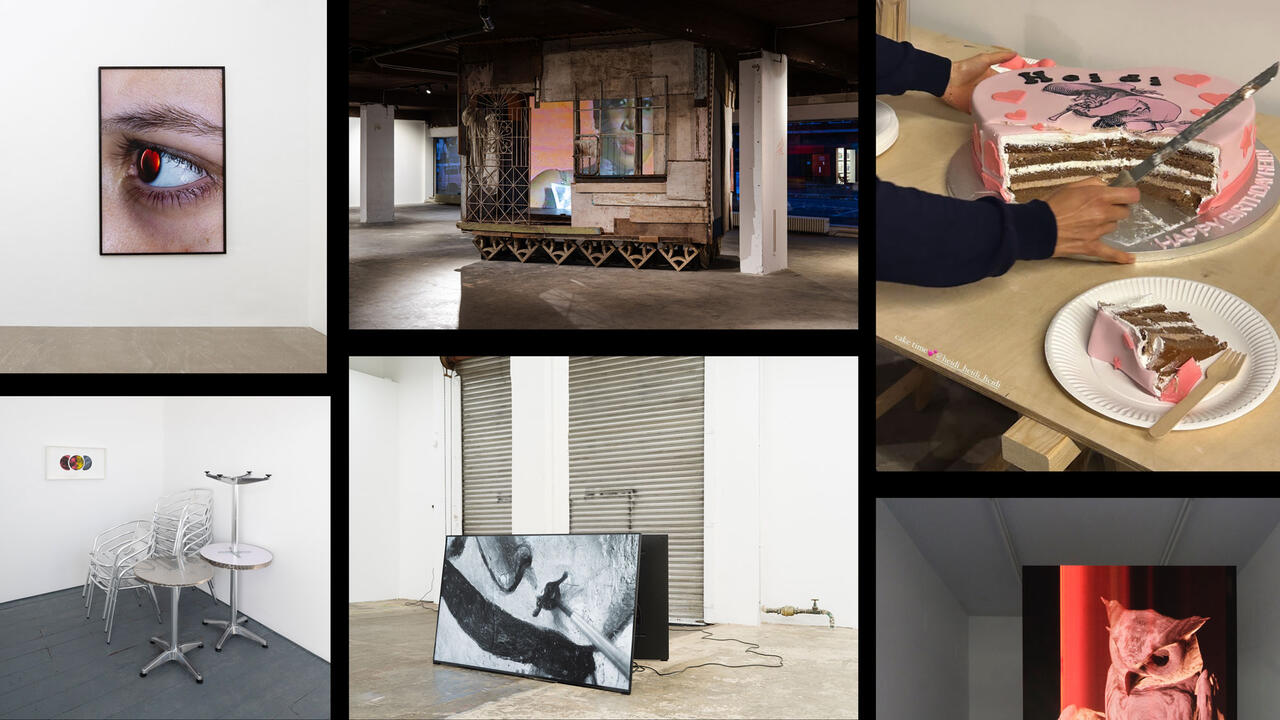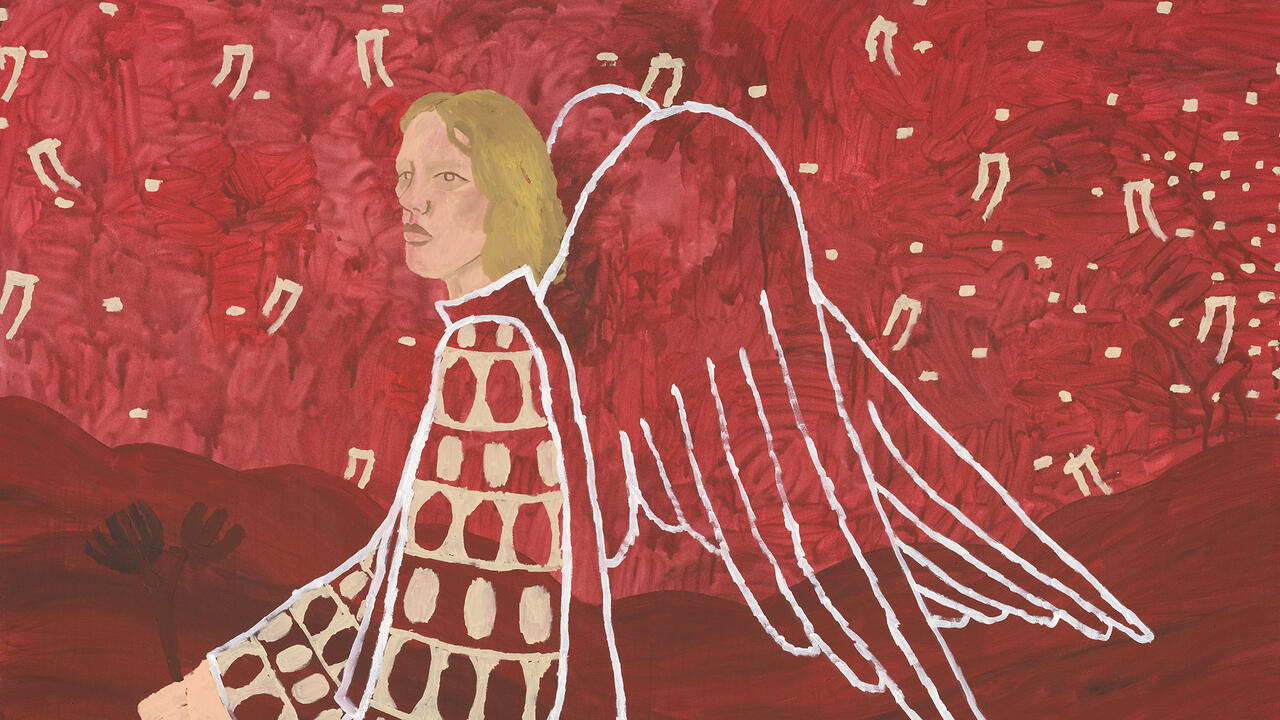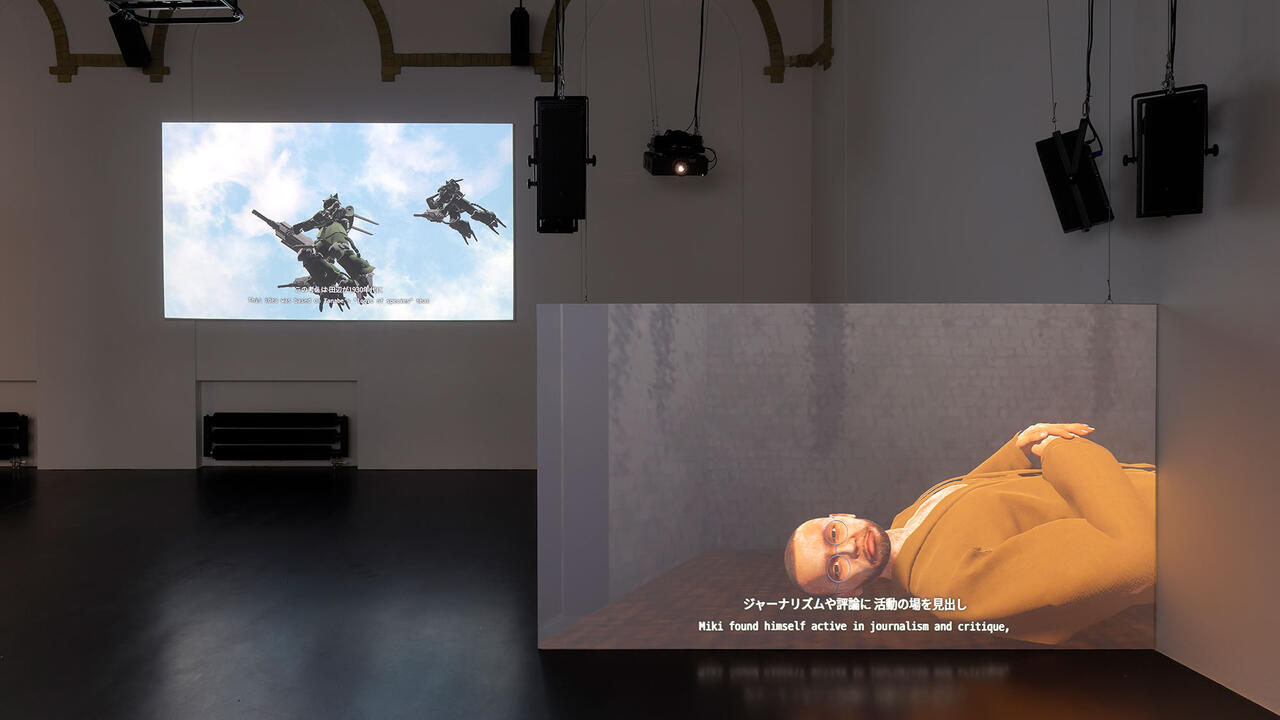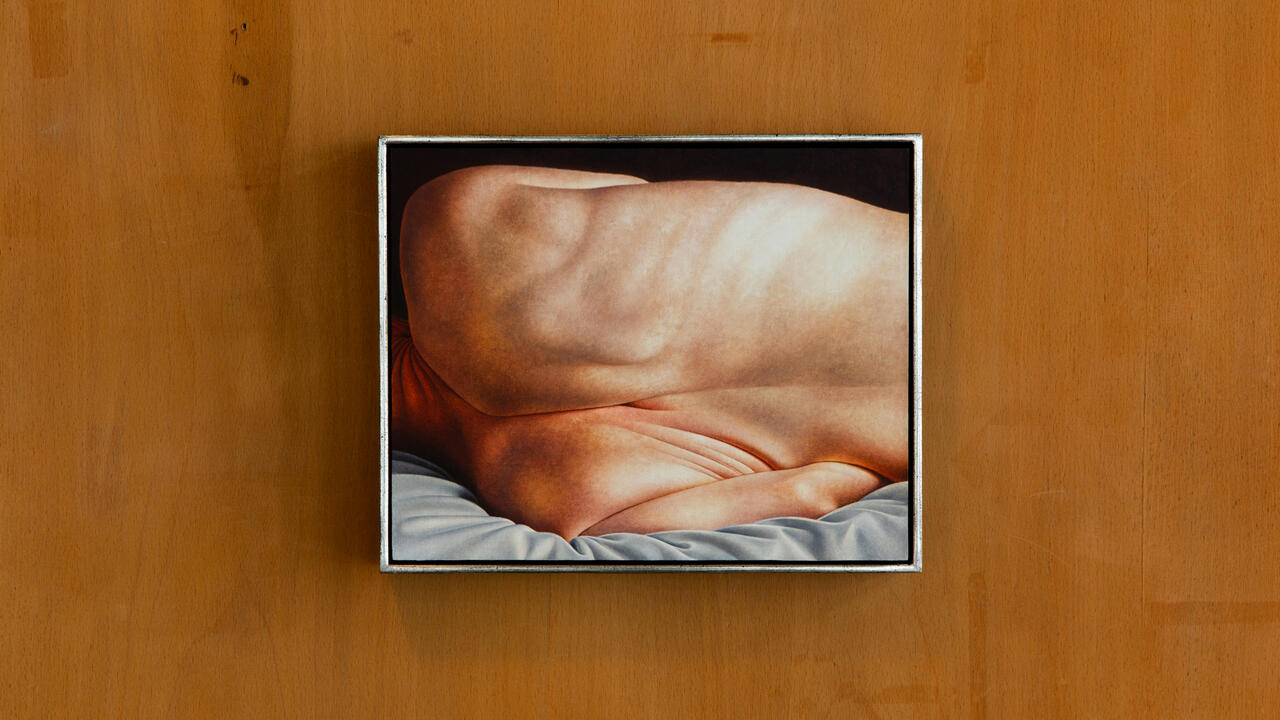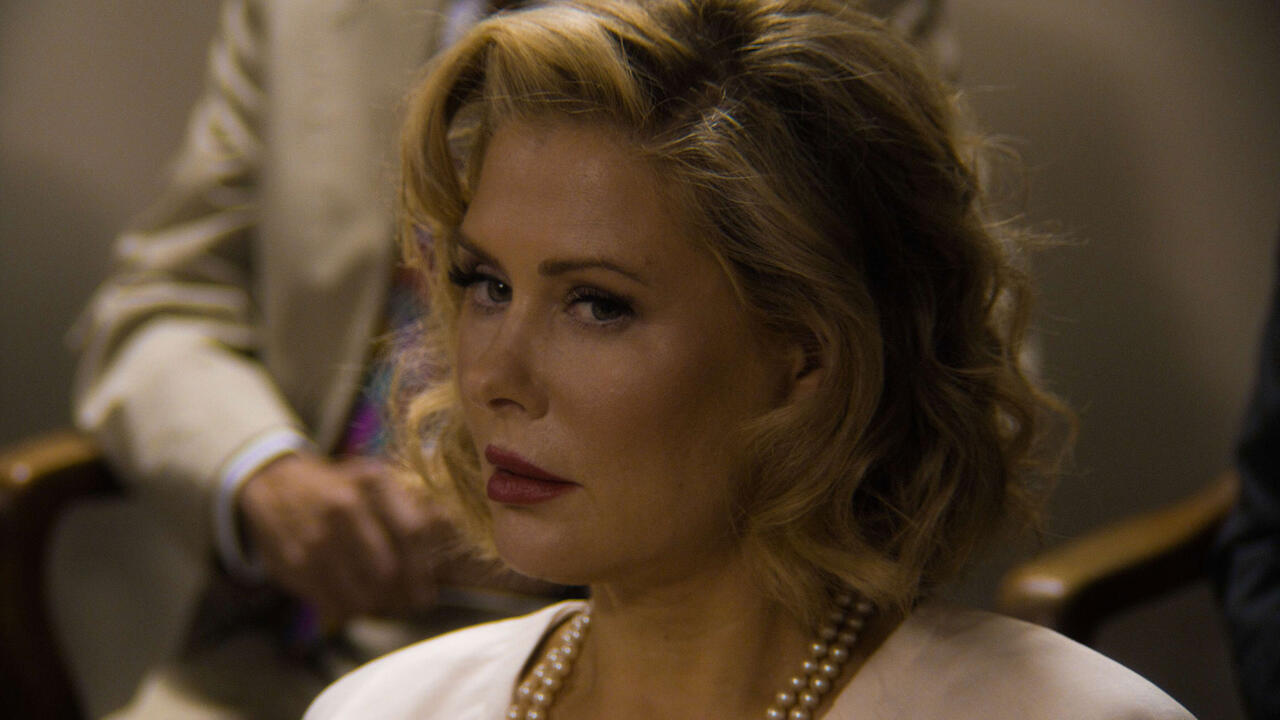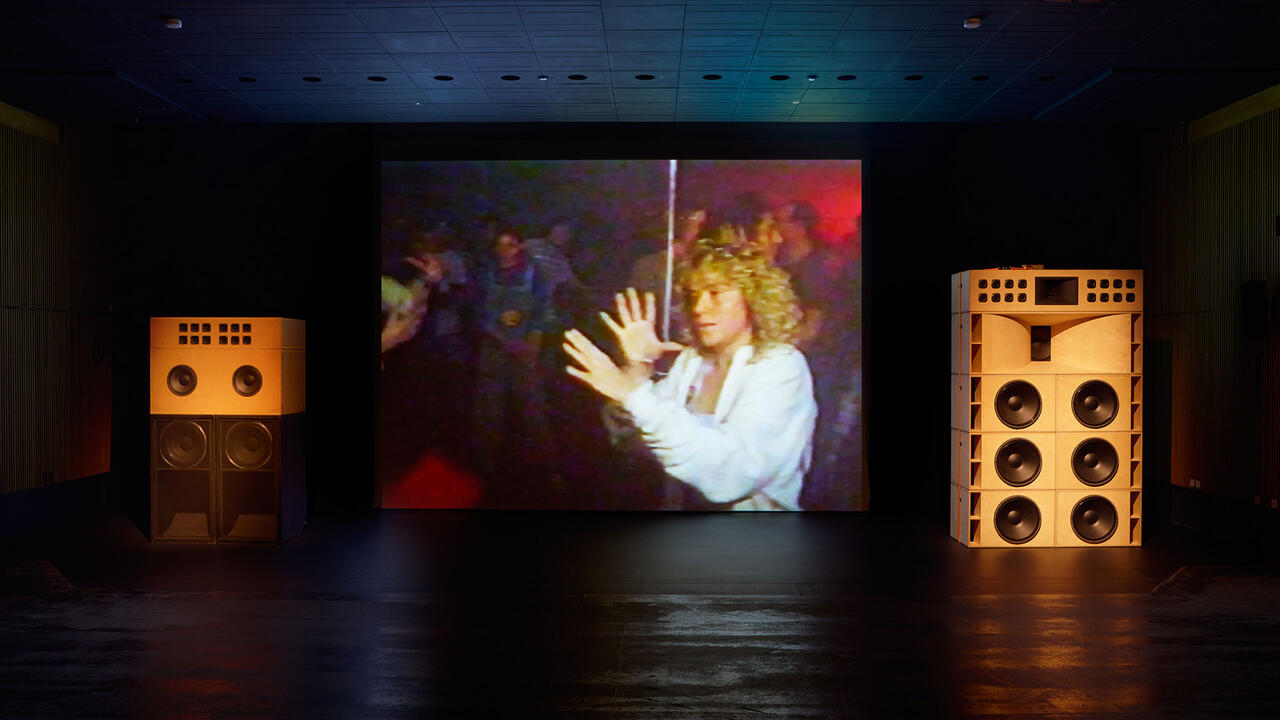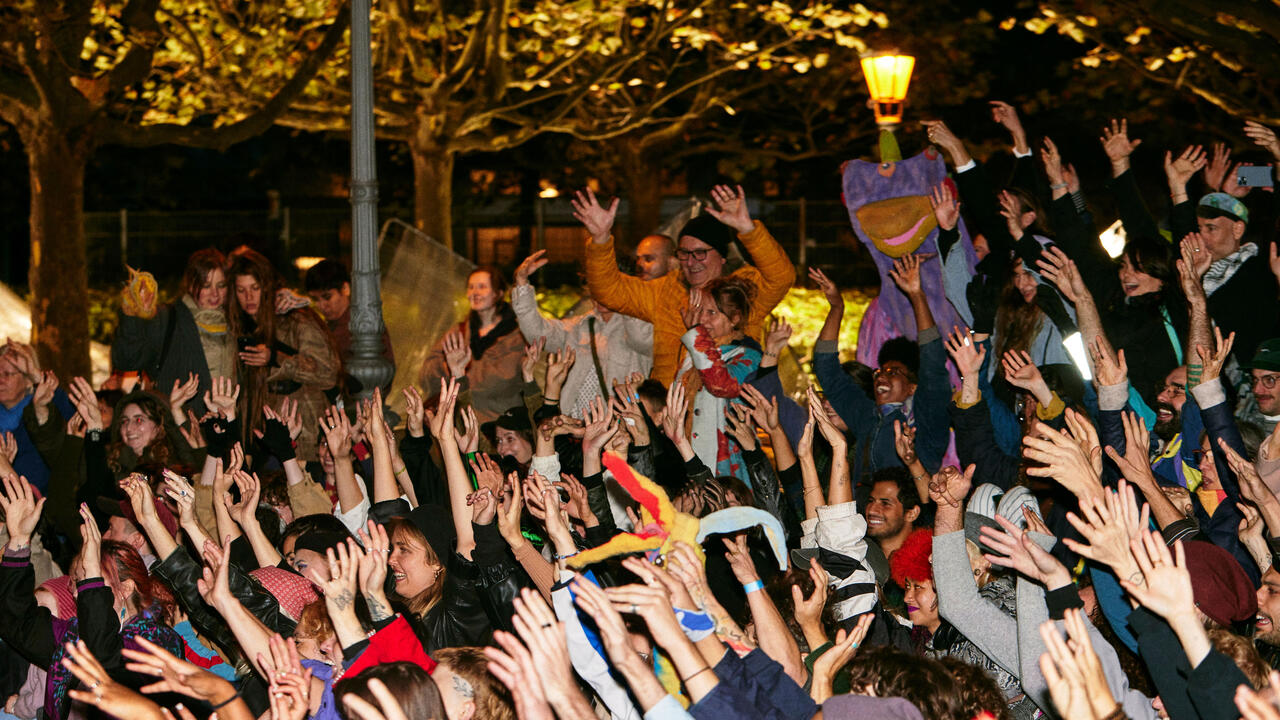Luke Willis Thompson
Galerie Nagel Draxler, Berlin, Germany
Galerie Nagel Draxler, Berlin, Germany

Luke Willis Thompson’s exhibition, ‘Cemetery of Uniforms and Liveries’, comprises his new stark, silent 16mm film, which has been transferred to video. In this work, which shares the exhibition’s title (as well as that of a work by Marcel Duchamp), two young black men are depicted one after the other in slightly slowed-down, static-frame black and white portrait shots.
The film’s action consists solely of the subjects’ bodily processes: a pulsing neck, a chest inflating with breath, eyes welling with tears. At first, a young man in his late teens or early 20s looks beyond the camera as dramatic lighting obscures his face. Subsequently, a slightly older man stares directly at the camera with his head cocked. While both men’s expressions are largely blank, the first could be read as vulnerable or hopeful while the second appears more confident. In its drawn-out four minutes, the film provides a space for us to project onto the men our own ideas about their possible backgrounds and reflect upon our own life stories.

Reflecting our preconceptions back at us seems par for the course for Thompson, whose New Museum Triennial performance in 2015 involved taking visitors out of the gallery to follow a black man wearing a hoodie and backpack into less affluent areas of Manhattan. At Nagel Draxler, the description of the video, printed on a partition wall, presents biographical information about the film’s two subjects: both men have maternal relatives who were victims of heinous instances of police brutality in their own homes. Brandon is the grandson of Dorothy ‘Cherry’ Groce, who was shot by police at home in Brixton and paralyzed in 1985, later dying of her injuries; Graeme is the son of Joy Gardner, who was suffocated by police with a ball gag and adhesive tape during a dawn raid for her deportation in her London home in 1993. None of the officers involved in these women’s deaths were indicted. With such contextual information, the work becomes an effective testimony to the omnipresent institutional violence that people of colour face in the West.
By shooting Cemetery of Uniforms and Liveries on celluloid, Thompson situates his work in relation to the filmic canon, in particular Andy Warhol’s ‘Screen Tests’ (1963–66). The exhibition’s press release states that this is not only an homage to Warhol’s 472 films, but is also a critique of their overwhelming whiteness (only a handful of Warhol’s hundreds of subjects are people of colour). But Thompson’s film also brings to mind the intimately intertwined actions of the camera and the gun: ‘shooting’. As Susan Sontag wrote in On Photography (1977), ‘[t]here is something predatory in the act of taking a picture […] Just as the camera is a sublimation of the gun, to photograph someone is a sublimated murder.’ In its directness, Thompson’s film requires us to take an extended, perhaps voyeuristic, look at these individuals – alive and on view – at a time when a disproportionate number of unarmed black men are being killed or incarcerated.

What was the feeling evoked by Thompson’s presentation in 2016 in Berlin? Recently, a fractious discourse has emerged in the city among many in the cultural sectors who fear the capital’s ‘neoliberalization’. Like London and New York before it, the city is changing due to external economic factors, while a worrying resurgence of interest in neofascism is evidenced by parties such as Alternativ für Deutschland, which are catalyzing a new race war in Germany amid the influx of refugees. While much artwork dealing with these subjects is moralizing or pedantic – and while recent political discussions in Berlin have often seemed retrograde at best, racist at worst – Thompson’s work deftly evades these traps, encouraging us to look, look and look again.









